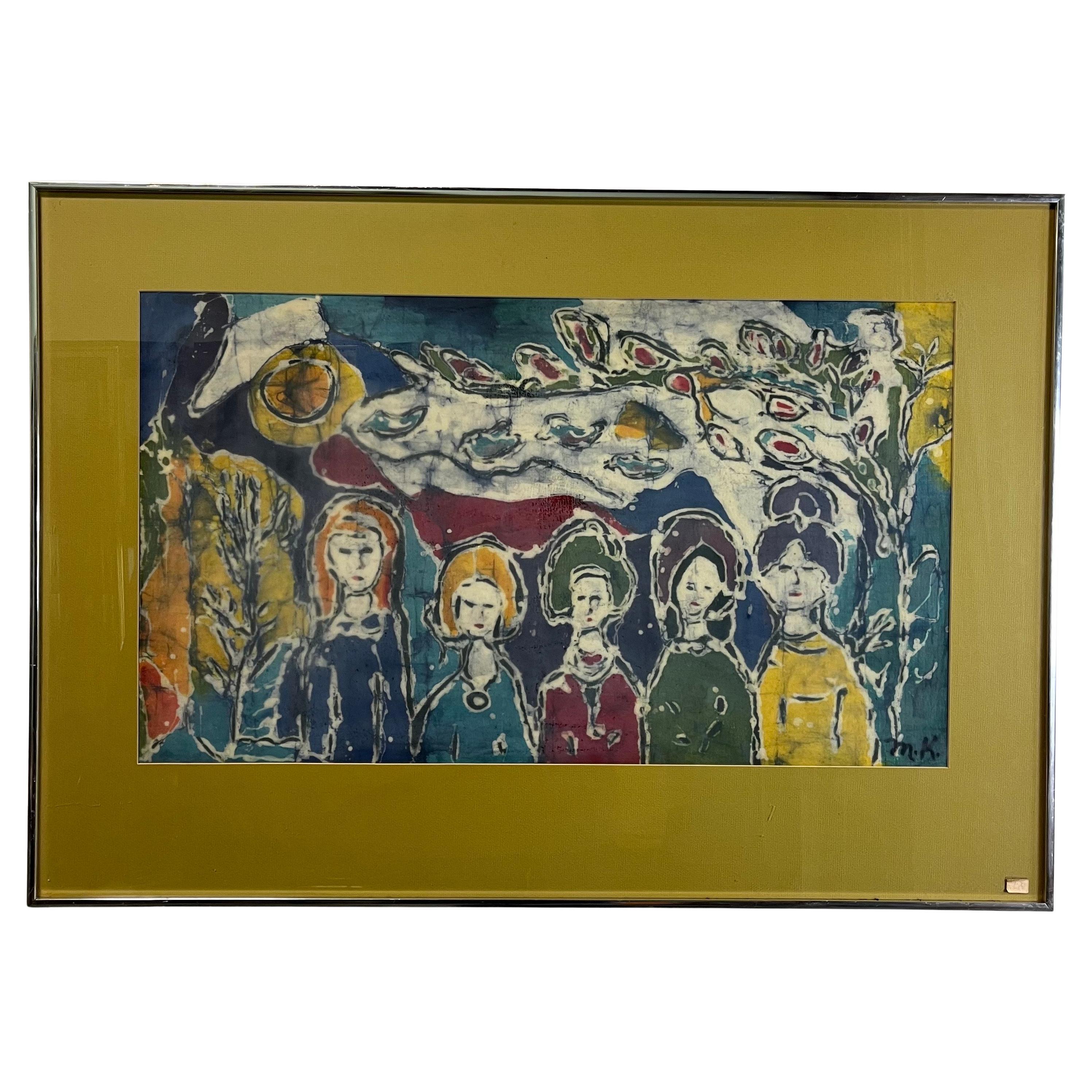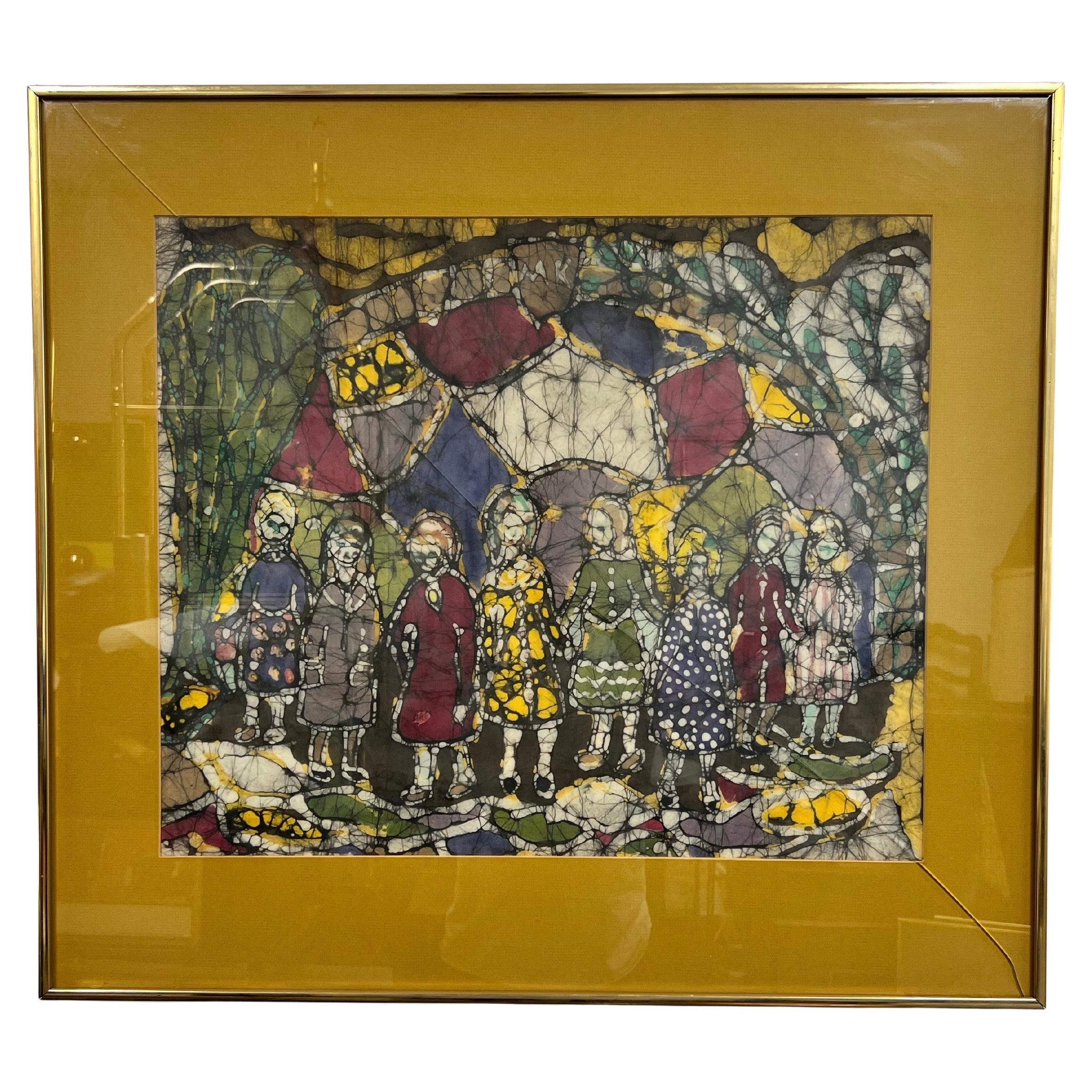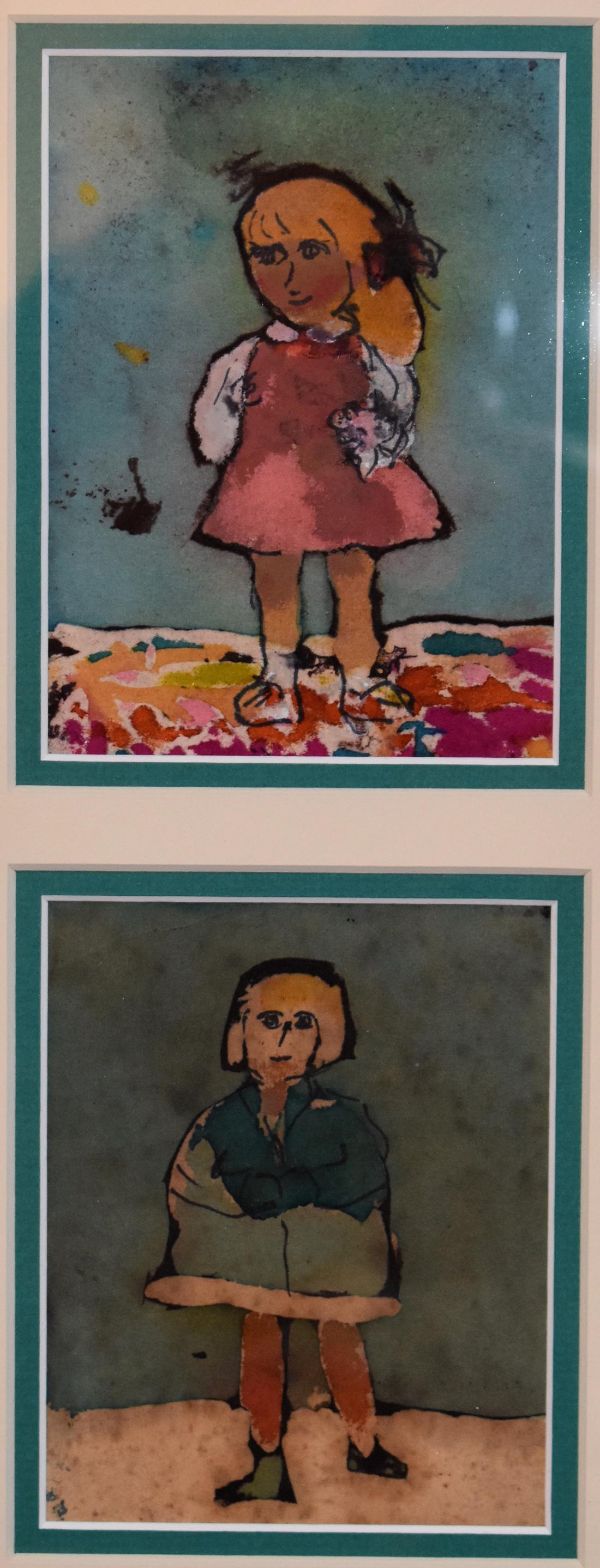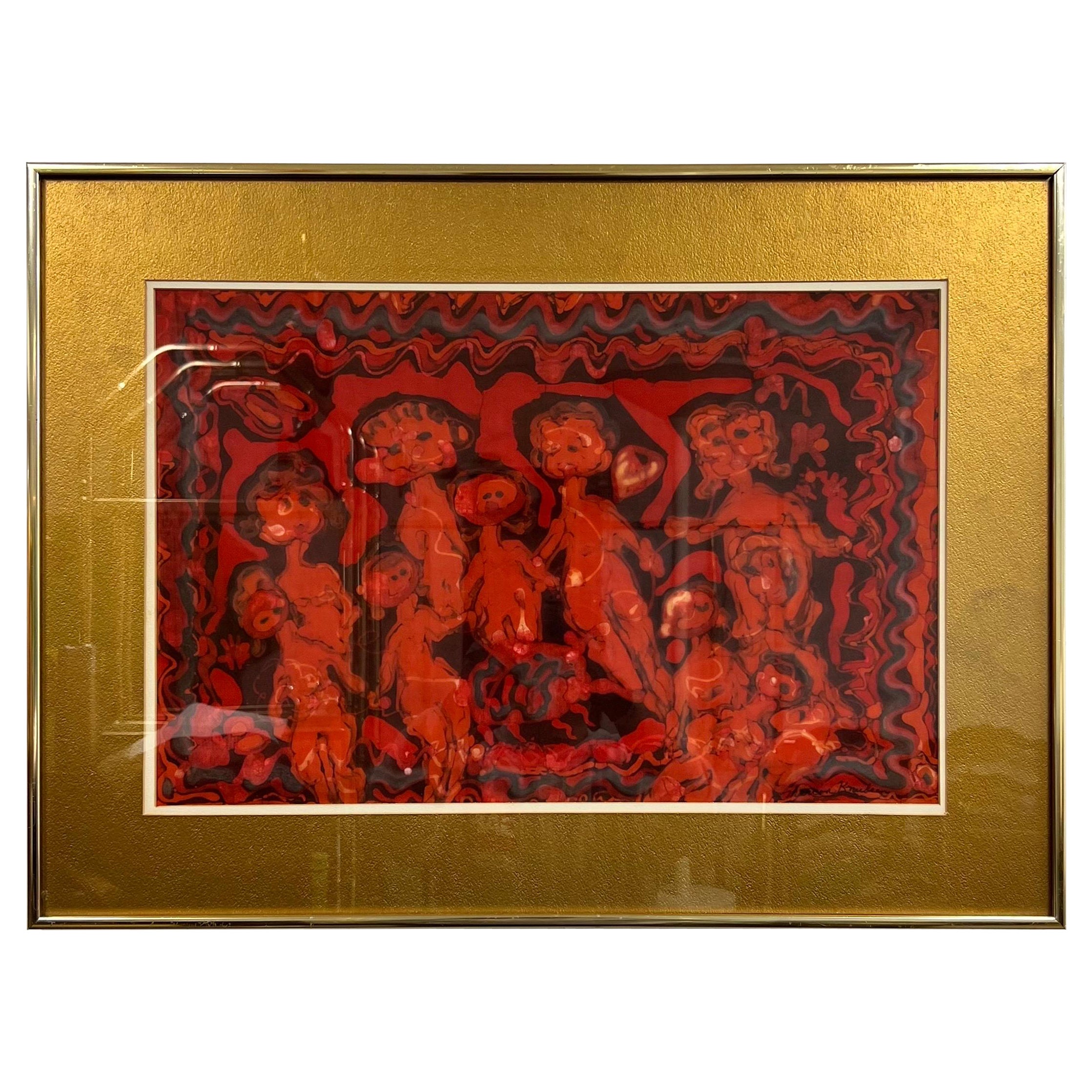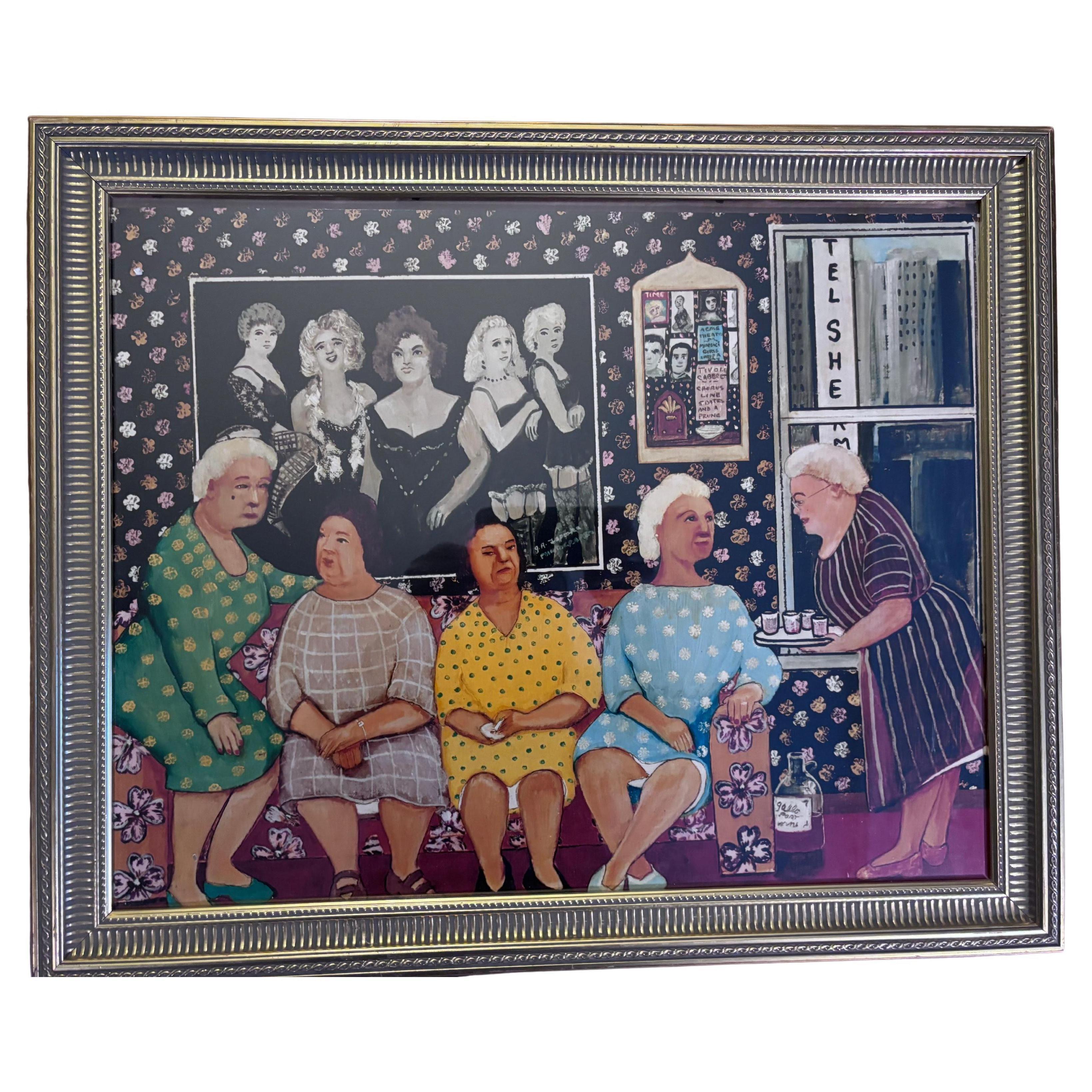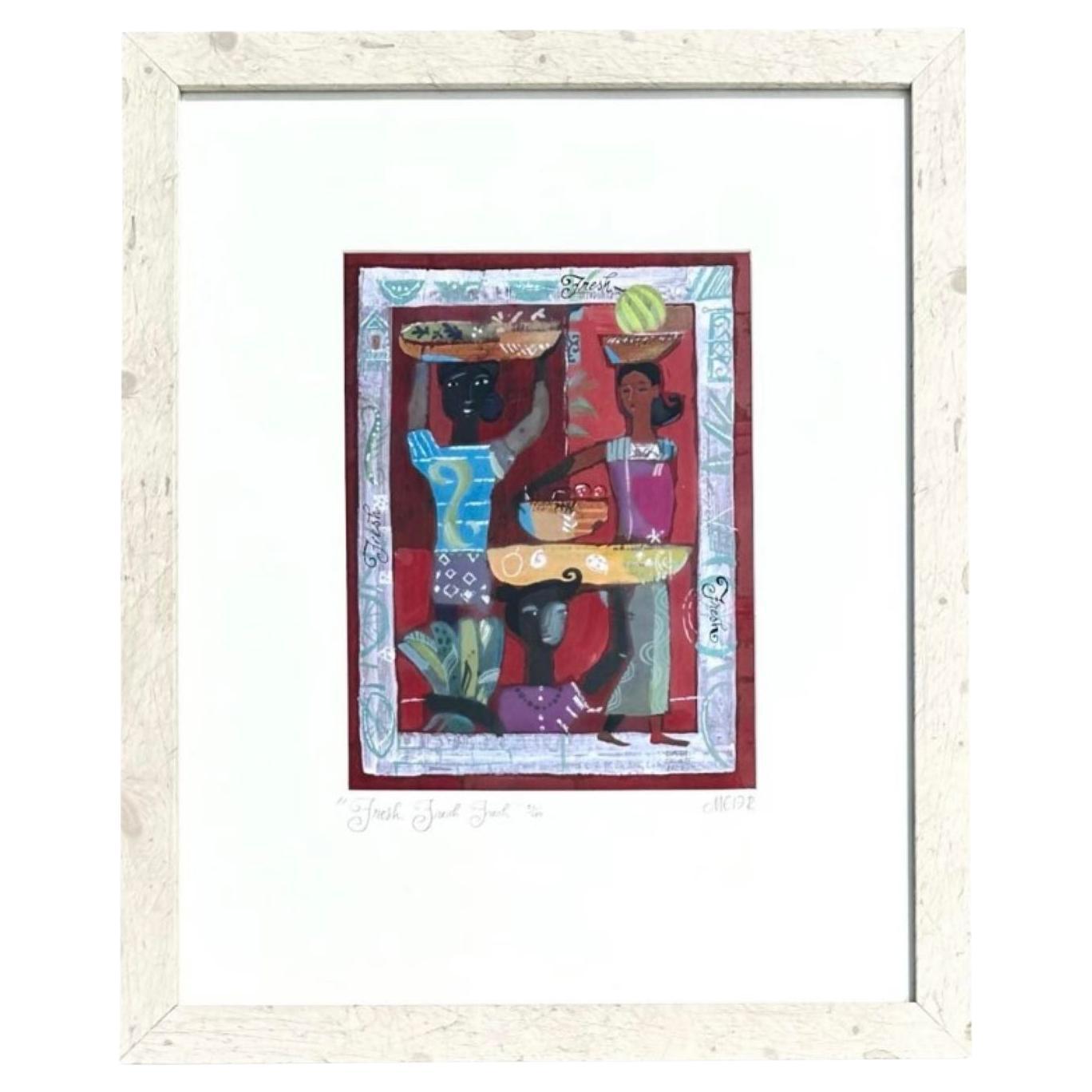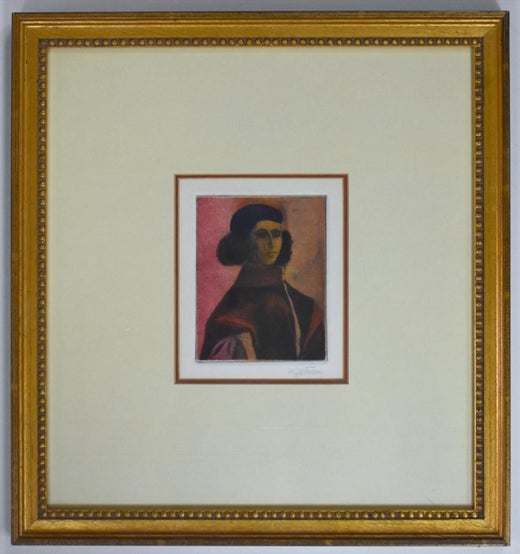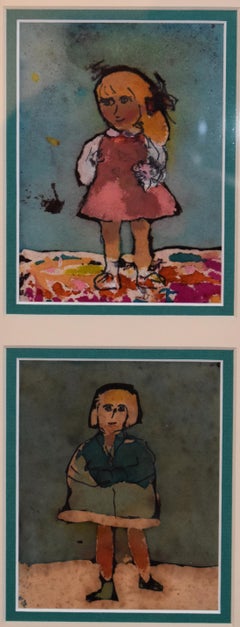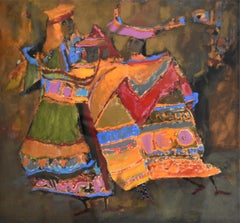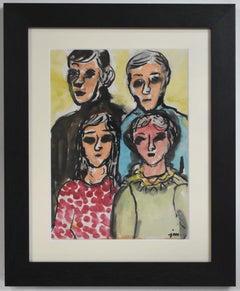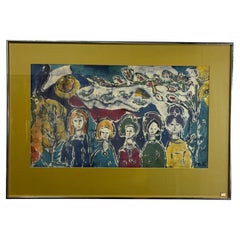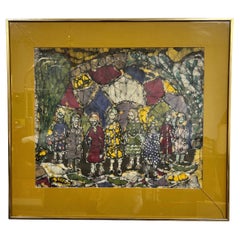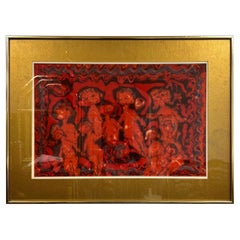Margaret Putnam"GIRLS NIGHT OUT" MID CENTURY MODERN BATIK SAN ANTONIO ARTIST20th century
20th century
About the Item
- Creator:Margaret Putnam (1913 - 1987, American)
- Creation Year:20th century
- Dimensions:Height: 22 in (55.88 cm)Width: 23 in (58.42 cm)Depth: 3 in (7.62 cm)
- Medium:
- Movement & Style:
- Period:
- Condition:Please visit my storefront for more vintage and mid-century artwork.
- Gallery Location:San Antonio, TX
- Reference Number:1stDibs: LU769312642932
Margaret Putnam
Margaret Putnam was a San Antonio artist who left an artistic legacy rare even in the art world. She was a 20th-century woman with a Renaissance soul who lavished her work with brilliant color, always breaking and making the rules to achieve the desired effect. An explorer, Putnam was self-taught. She worked in oil, watercolor, wax resist, casein and pastel, exploring new avenues, developing new techniques, combining mediums and creating a unique style. She had a background in fashion illustration as well. Even after becoming partially paralyzed from Lou Gehrig's disease, she continued to work relentlessly. She had a little arts and crafts community in La Villita. She was a remarkable woman, a talented artist and in the real spirit of the Alamo, she represented true Texas grit. Her strokes were broad, her colors bold, her paintings powerful and expressive. She painted an 18-by-Seven and a half foot mural at the top of the San Antonio Hilton Hotel. She has won many awards such as River Art Show, San Antonio, Beaumont Museum, Texas Fine Arts Museum and Texas Watercolor Society. She has also won the Old Testament National Exhibit Award, Award for ‘One of Ten Outstanding Women in San Antonio’, ‘Outstanding Artist of the Year’ from San Antonio Art League and J.C. Penney Golden Rule Award. She was also the three-time winner of Top Award for Oils from Texas Fine Arts and received Recipient of the Year award from the San Antonio Arts Commission. Revered for her innovative techniques and inimitable style before her death in 1989, her renown continues even today.
- ShippingRetrieving quote...Shipping from: San Antonio, TX
- Return Policy
More From This Seller
View All1960s Modern Mixed Media
Ink
1960s Modern Figurative Paintings
Mixed Media, Handmade Paper
Mid-20th Century American Modern More Art
Ink
20th Century Impressionist Figurative Drawings and Watercolors
Watercolor
20th Century Impressionist Figurative Drawings and Watercolors
Watercolor
Mid-20th Century American Modern Abstract Drawings and Watercolors
Watercolor
You May Also Like
Mid-20th Century American Mid-Century Modern Paintings
Paint
Mid-20th Century American Mid-Century Modern Paintings
Paint
Mid-20th Century American Mid-Century Modern Paintings
Paint
Late 20th Century American Folk Art Outsider and Self Taught Art
Paper
Mid-20th Century North American Paintings
Glass, Wood, Paper
Mid-20th Century Mid-Century Modern Paintings
Paint
